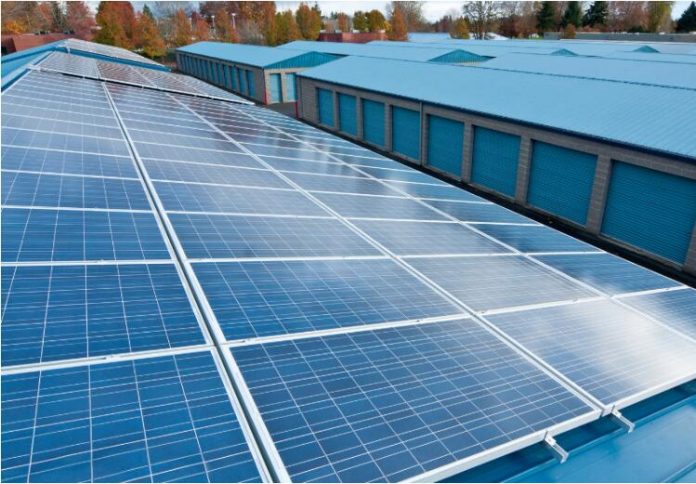Open access solar consumers will not have the net metering facility in Haryana, according to the regulations for net and gross metering in the state proposed by the Haryana Electricity Regulatory Commission (HERC).
The draft ‘Rooftop Solar Grid-Connected Systems Based on Net Metering and Gross Metering Regulations 2021’ says, “The facility of net metering shall not be available to Open Access consumers.”
The absence of provisions relating to gross metering in the existing regulations necessitated the revision according to HERC.
A discussion paper has been prepared with regards to the revision of regulations. Stakeholders have time until April 15, 2021, to submit their suggestions. A public hearing will be held on April 22. The Commission will give final shape to the regulations based on the feedback received.
According to the proposed regulations, a rooftop solar system’s maximum rated capacity, to be installed under net metering, should not exceed 10 kW. In contrast, under gross metering, the eligible consumer can install the rooftop solar system up to a maximum rated capacity of 2 MW.
The draft is in line with the Electricity (Rights of Consumers) Rules, 2020, which mandates net metering for loads to 10 kW and gross metering for loads greater than 10 kW.
These regulations will apply to all the distribution licensees and consumers of electricity in Haryana.
The rooftop solar system installed by an eligible consumer may be self-owned or third-party owned.
In case, network augmentation is required for low tension (LT) consumers, the distribution licensee will bear the cost of network upgradation and augmentation.
If network augmentation is required for high tension (HT) consumers, the cost of network upgradation and reinforcement will be shared equally by the consumer and the distribution licensee.
The electricity generated from third-party-owned solar systems based on net metering will be used to meet the eligible consumer’s internal electricity needs up to the capacity allowed. In contrast, under gross metering, the generation will be fed into the grid at the interconnection point.
The solar meter (a unidirectional meter) must be installed as an integral part of the net metering or gross metering system.
Under net metering, the electricity generated from a rooftop solar system will be capped at 90% of the consumer’s electricity consumption at the end of the settlement period, which will be the relevant financial year. In case the solar system is connected to the grid, the 90% capping will be on the electricity consumption from the date of connection to the end of the financial year. The carryforward of excess energy generation will be allowed from one billing cycle to the next up to the end of the same financial year. There will be no carry forward of excess energy to the next financial year.
In case the electricity generation by the rooftop solar system exceeds the electricity consumed during the billing period, the excess power generated will be carried forward to the next billing period.
In case the electricity supplied by the distribution licensee during any billing period exceeds the electricity fed into the grid, the distribution licensee will raise an invoice for the net electricity consumption after taking into account any electricity credit balance remaining from the previous billing periods.
Under gross metering, the licensee will undertake energy accounting and settlement with either the consumer or the third-party.
The energy accounting and settlement procedure for consumers or third-party owners installing and operating rooftop solar system under the gross metering arrangement will be as per the following procedure:
- For each billing period, the licensee will show the quantum of electricity injected by the rooftop solar system installed at the eligible consumer’s premises in the billing period.
- The distribution licensee will reimburse the eligible consumer or the third-party owner for the quantum of injected electricity by the rooftop solar system during the billing period through ‘Solar Injection Compensation.’
- There will be no deemed generation charges payable to the rooftop system’s eligible consumer or third-party owner.
- The distribution licensee will be responsible for billing the electricity injected by the rooftop solar system into the distribution system.
The applicant should install the rooftop solar system within 180 days from the letter of award. The duration of 180 days is the maximum permissible time for the applicant to install rooftop solar until the distribution licensee provides an extension.
In May last year, HERC had issued new regulations for single-point supply through rooftop solar and open access projects for residential and commercial consumer categories. The consumers include employers’ colonies, group housing societies and residential or residential-cum- commercial facilities, commercial complexes of developers and industrial estates, IT parks, and special economic zones.
Subscribe to Mercom’s real-time Regulatory Updates to ensure you don’t miss any critical updates from the renewable sector.
Mercom’s flagship event Mercom India Solar Summit, to be held virtually on April 8 and 9, will have an exclusive session titled “Can Rooftop Solar Come Out of Ground Mount’s Shadow and Be the Next Big Thing?” Industry stakeholders will share ideas on facilitating growth in the rooftop market and how to address challenges when dealing with DISCOMs. You can click here to register for the event.






